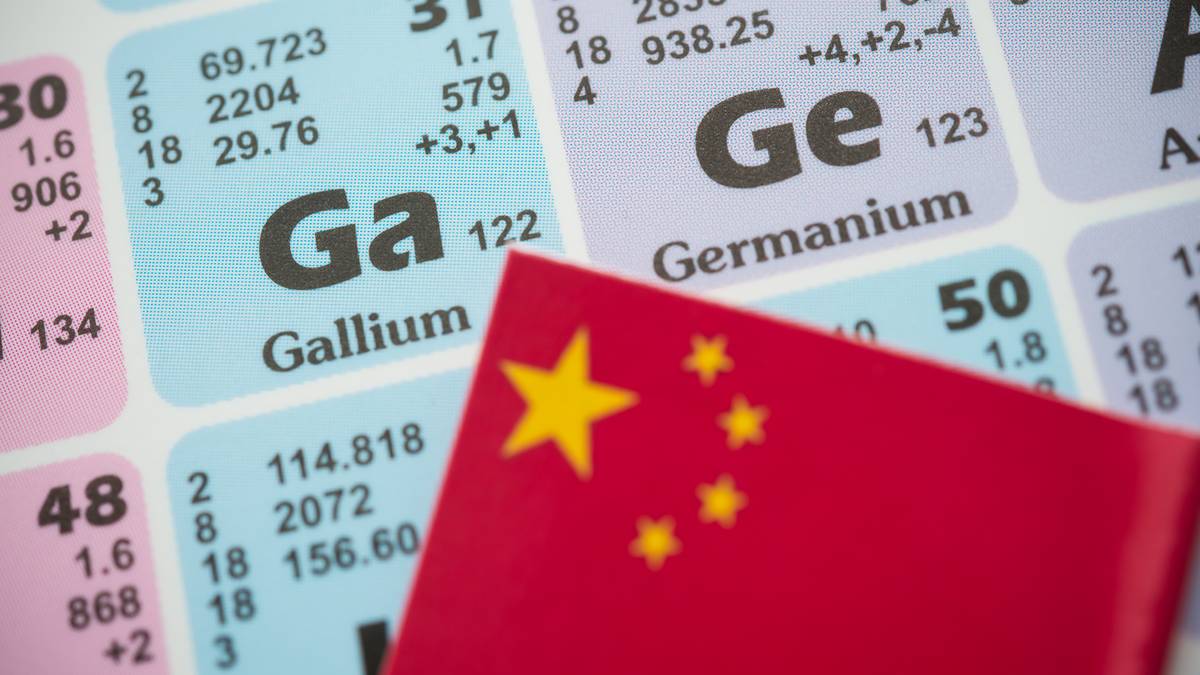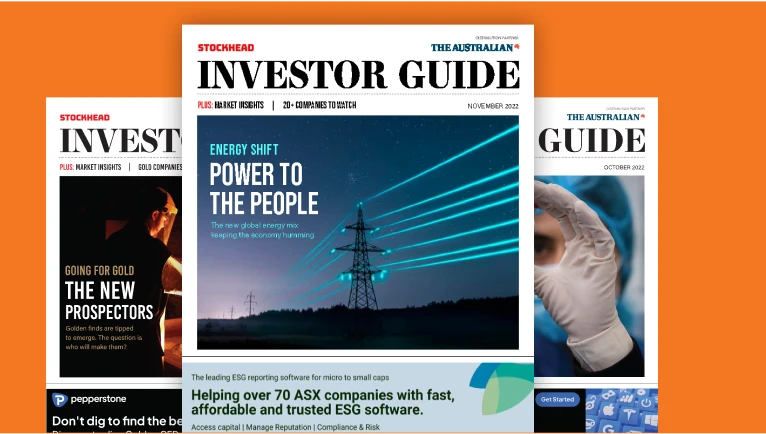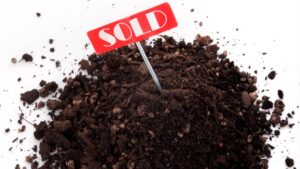Kristie Batten: Your guide to gallium, the critical mineral China doesn’t want you to have

Gallium has stormed into the headlines thanks to Chinese export controls. But what is it and how is the rare metal produced? Pic: Getty Images
- Gallium has stolen the headlines since China placed export controls on the rare semiconductor metal
- But how does the market for the niche commodity really work?
- And which ASX-listed companies have taken strides in the sector?
Gallium has been making headlines lately due to Chinese export restrictions and local discoveries, which have been well received by ASX investors.
But how much do you really know about the soft, silver blue metal used in semiconductors, transistors, LEDs, computer chips and defence applications?
Aside from demand growth in those areas, its use in robotics, gallium nitride fast-charging technology and neodymium iron boron magnets is growing.
The global market is projected to grow from US$2.45 billion in 2024 to US$5.38 billion in 2028 and US$21.53 billion in 2034, representing a compound annual growth rate of 24.3%.
According to CRU Group, gallium demand in 2023 was 708 tonnes, and is expected to reach 1180t by 2030.
Gallium is on the US, Europe and Australia’s critical minerals list.
Not unlike a lot of other critical minerals, China controls the market, accounting for a staggering 98.4% share of global production in 2024.
It is understood to have the capacity to produce up to 1200tpa of gallium.
China already implemented export restrictions on gallium, and sister metal germanium, in mid-2023, and in December 2024, it announced an outright export ban of gallium, germanium and antimony exports to the US, in retaliation to the Biden Administration’s expanded restrictions on the sale of advanced US technology to China.
China also banned the export of gallium-related technology.
Small and complex market
Rovjok is a Finnish critical minerals consultancy which has worked with mining companies including Anglo American and Agnico Eagle, as well as the US government.
Rovjok’s Scott Thomsett and Tim Rose, both Aussie expats based in Helsinki and London respectively, have done extensive research on gallium.
Thomsett told Stockhead while the processes to recover gallium were reasonably straightforward, China controlled the production of most of the reagents used in the process.
“The big question mark on the economics outside of China is, number one, how do you secure access to the key reagents (i.e. the ion-exchange resins) in the right quantity at a price that is on par or better than China? Particularly when the more recent restrictions out of China cover these type of technologies,” he said.
At the moment, there is a bifurcated market with two prices, a Chinese price and a Rotterdam price.
“So whilst that’s the case, it’ll probably be profitable with current non-China gallium prices, and as the necessary supply chains for the reagents build up outside of China. But, then if China were to … release those export controls and flood the market with gallium, prices would naturally then start to move closer to the Chinese incentive price,” Thomsett said.
“The question is, of the new projects, can they scale up and get their costs down to a point where it’s competitive in China, even in a non-bifurcated market?”
Rose noted it would cost an estimated US$150 million to build a 40-50tpa gallium refinery, but the total contribution of a gallium stream on an alumina refinery would only be about around 1-2% of revenue compared to the alumina.
Who produces gallium?
Aside from China, there’s little production of gallium from Western countries.
According to CSIRO, gallium is as abundant on earth as copper but rarely occurs at high enough concentrations to mine as a primary product.
Most of the world’s gallium is produced as a by-product of alumina refining.
In Germany, Vital Pure Metal Solutions produces a small amount of gallium, while AOS Stade is reportedly planning to resume production from its Stade plant, which was suspended in 2016.
Greece’s Metlen is reportedly planning to produce 50t per annum of gallium from 2028, enough to satisfy all of the European Union’s demand.
In December, Rio Tinto (ASX:RIO) announced plans to build a demonstration plant in Quebec to produce up to 3.5tpa of gallium, which could pave the way for a 40tpa commercial-scale plant.
Canada’s Neo Performance Materials, backed by Andrew Forrest’s Wyloo Metals, is North America’s only recycler of semiconductor-grade gallium.
Meanwhile, Australia’s MTM Critical Metals (ASX:MTM) is building a 1tpa demonstration plant in Texas.
Its proprietary Flash Joule Heating technology, which is an advanced electrothermal process that can extract metals including lithium from spodumene, gallium from scrap, and gold from e-waste.
The company has agreements with US-based gallium and germanium supplier Indium Corporation and India’s Vedanta for aluminium waste recycling.
ASX companies build gallium exposure
Alongside MTM, the newest kids on the ASX gallium block are RareX (ASX:REE) and Western Yilgarn (ASX:WYX).
Meanwhile, RareX recently reported what it believes are the highest gallium grades ever reported in Australia from its Cummins Range rare earths and phosphate project in WA.
Historical drill holes contained values of up to 6826g/t gallium.
“Because that project’s already quite nicely advanced, it now leapfrogs the pack and sort of becomes Australia’s most advanced gallium project,” RareX managing director James Durrant told Barry FitzGerald during last week’s episode of The Explorers Podcast.
Two weeks ago, bauxite play Western Yilgarn applied for a new exploration licence, 25km north of its flagship Julimar West project, which it is advancing a scoping study on this half.
The new bauxite license also hosts gallium mineralisation, with historical aircore drilling returning grades of up to 110g/t gallium.
Vacuum drilling is planned with the aim of defining a JORC resource.
Victory Metals (ASX:VTM) also lays claim to an advanced project and has successfully produced gallium in the final mixed rare earth carbonate product from its North Stanmore project in WA.
The company is advancing discussions with potential downstream partners across the technology, defence and energy sectors.
An early mover in gallium was G50 Corp (ASX:G50), which discovered a gallium “halo” at its Golconda project in Arizona.
Drilling is underway now to extend the discovery.
Nimy Resources (ASX:NIM) first discovered gallium at the Block 3 target at its Mons project in Western Australia about a year ago.
The company has established an exploration target of 9.6-14.3 million tonnes at 39-78 parts per million gallium after hitting a peak value of 1m at 495ppm gallium and plans to report an initial resource following phase two drilling.
Nimy has signed an agreement with Curtin University to advance gallium research and development, as well as a collaboration agreement with US-based M2i Global aimed at assuring a supply of gallium to the US Department of Defense.
Other companies to get sniffs of gallium include Aruma Resources (ASX:AAJ) at Saltwater in WA, and Axel REE (ASX:AXL) at Caladão in Brazil.
Australia no stranger to gallium
While Australia does not produce gallium, most people don’t realise that wasn’t always the case.
In 1989, French chemical company Rhône-Poulenc opened the $50 million Pinjarra gallium plant in Western Australia, aiming to produce up to 50 tonnes per annum, or about 20-30% of total global bauxite demand at the time.
The plant produced gallium using the liquor from Alcoa’s neighbouring alumina refinery.
The company also had plans to build a stage two, which would have comprised a $150 million rare earths plant.
However, the gallium price slumped the day the plant opened and it was put on care and maintenance about a year later.
Rovjok said Pinjarra should serve as a reminder that policymakers and industry leaders from both the upstream and downstream needed to work together, across the entire value chain, towards long term strategic goals.
“A big part of the challenge is how do you make a meaningful return on these projects in the long term?” Rose said.
“Providing incentives for the capex to build the projects doesn’t necessarily ensure that in 5-10 years that they maintain competitiveness. It doesn’t solve the challenge when China opens the floodgates and prices crash.”
Challenges and opportunities
Rovjok’s research has found that Australia is one of the best-placed countries to become a supplier of gallium, mainly due to the existing alumina industry.
For the juniors with discoveries, Thomsett said it was important for them to define a path to production.
“I think what Australia needs is coordination with the downstream, to bring to light the critical importance to the end-use markets (particularly those that matter for national security),” he said.
“It also needs a few leaders in the market to build capacity at a scale that supports the ecosystem to benefit the operating cost and R&D within what is an incredibly niche sector.
“In that regard, what would realise the value from these new discoveries in Australia is then having flexible enough flow sheets … that they can process either novel gallium intermediates, or preferencing bauxite feeds in the host alumina refineries that can favour higher gallium concentrations.
“But it would require meaningful government support, because of the market dynamics of such a minor metal, and then some strategic offtakes that can help ride out future price volatility as well.”
At Stockhead, we tell it like it is. While MTM Critical Metals, Western Yilgarn, RareX, Axel REE and Victory Metals are Stockhead advertisers they did not sponsor this article.
Related Topics

UNLOCK INSIGHTS
Discover the untold stories of emerging ASX stocks.
Daily news and expert analysis, it's free to subscribe.
By proceeding, you confirm you understand that we handle personal information in accordance with our Privacy Policy.








